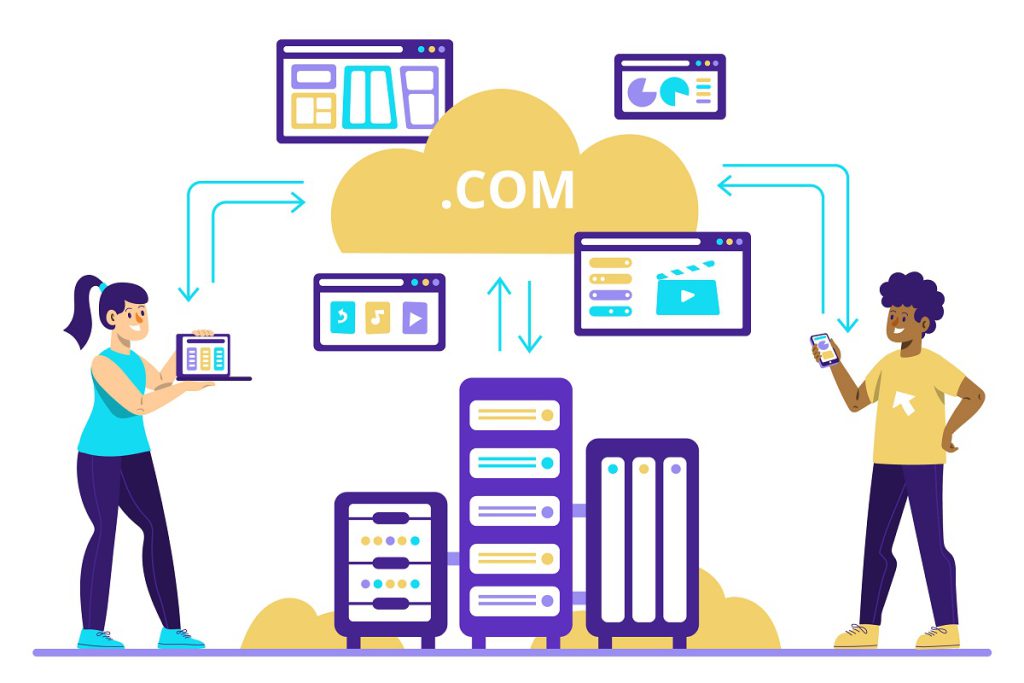DevOps processes require collaboration, rapid delivery, and the use of toolchains. However, security concerns such as code scanning, network monitoring, and access control are usually adjuncts, and there are security issues and vulnerabilities in the production environment.
That is where DevSecOps steps in, which is the incorporation of security considerations from the development process, testing, and deployment of the application and the use of automation and continuous assessment.
AWS provides a number of tools and services to make it possible to achieve all the above-mentioned. Let’s explore some of the key areas for implementing a security-focused DevSecOps approach:
#1. Infrastructure Provisioning
It applies when creating infrastructure as code using AWS CloudFormation to provision AWS resources to enhance security. It is possible to apply “cfn_nag” to detect security misconfigurations in CloudFormation templates.
It is possible to include cfn_nag in the CI/CD run to ensure that if it identifies security concerns in templates, the deployment must fail. Additionally, it should be controlled who is allowed to create CloudFormation stacks and use them in production environments.
#2. Image Building
There are different choices in AWS to build/store images for servers that are supposed to be immutable, such as EC2 AMIs & ECS container images.
The other aspects include ensuring that only approved and scanned images get to the production environment. While AWS CodeBuild can be used alongside Clair for container scanning and inspection for configuration status, it is possible to integrate security at the image-building phase.
It can then push passing images securely to destinations such as ECR or other repositories, preventing bad images.
#3. Vulnerability Management
As soon as the servers and containers are up and running, there’s constant vulnerability monitoring going on.
For example, AWS Inspector is used to discover vulnerabilities in EC2 instances, while other tools such as Prisma Cloud is used to assess ECS clusters and serverless architectures.
When these tools are integrated with a notification system, it presents a closed loop for vulnerabilities identified after the application is deployed so that they can be corrected in the next release.
Pre-fabricated automatic remedial actions can also be designed wherever feasible.
#4. Infrastructure Monitoring
To identify security incidents or abnormally occurring security incidents within AWS environments, it is necessary to parse VPC Flow Logs, CloudTrail logs, and AWS Config configuration changes.
Storing the logs in AWS CloudWatch and creating CloudWatch Events can assist in sending alerts on the main security incidents.
As for tools, there are automated security best practice assessments depending on those logs and configurations, for instance, the Prowler tool.
#5. Secrets Management
Accidentally including AWS access keys, passwords, tokens or any other secrets in the code which is committed to the code repository results in severe security consequences.
It is also worth mentioning that employees’ sensitive information is protected with Secrets Manager and encryption, while access control policies will not let unauthorised personnel gain access.
Simply rotating secrets will automatically enhance the level of protection against compromised credentials, while confining broad IAM roles will reduce the impact.
#6. Access Controls
Illustrating AWS IAM policy permissions to the fine-grained level and MFA eliminates developers’ full access while minimising the account compromise impact.
Third-party identity providers such as Okta can be integrated into AWS IAM to streamline the process of user management within AWS Third-party security solutions, such as those offered by AWS organizations, allow for the creation of centralised security policies across multiple accounts and limit potential account access to multiple AWS accounts.
#7. Code Scanning and Analysis
by employing and integrating various AWS services such as CodePipeline, CodeBuild, and CodeCommit to include a scan for security and policies on code changes.
#8. Network Security
using VPC security groups, NACLs, route tables, etc. to give applications and systems the least privilege and enforce the zero trust architecture.
#9. Logging and Monitoring
Normally, logs produced by various services are collected in a single system, such as CloudWatch, for purposes such as analysis, alerts, and creating a dashboard.
#10. Identity and Access Management
By then, the application of IAM, SSO, and MFA to enforce the principle of least privilege in managing access.
#11. Incident Response
applying tools like AWS Config and AWS CloudTrail for the purposes of detecting changes and security events. An IR plan to deal with problems that may arise to ensure that corrective measures are taken promptly.
#12. Compliance and Validation
Integrating compliance scans and checks, such as CIS benchmarks, etc., in the Continuous Integration/Continuous Delivery (CI/CD) process.
#13. Key Management
safe key and secret storage and retrieval with the use of KMS, CloudHSM, and Secrets Manager services, respectively.
AWS Tools For DevOps Security
Container Security Tools
- AWS Amazon Inspector is a service that helps scan container images for vulnerabilities.
- AWS Certificate Manager is a service for managing SSL certificates to establish secure connections.
- Amazon ECR stores and manages Docker images in a secure public repository.
Identity and Access Management Tools
- AWS IAM contains permission characteristics and allows access to web services.
- AWS Organizations: the policies of one account can control policies in another account.
- AWS Single Sign-On is a cloud service for providing an organization’s users with one account through which they can access multiple applications.
Monitoring and Auditing Tools
- Amazon CloudWatch manages and monitors cloud metrics and log data
- AWS CloudTrail: This is used for audit purposes to track the API calls made within an AWS account.
- Amazon Guard Duty: service to detect threats
Infrastructure Security Tools
- AWS Shield: AWS Shield protects against Distributed Denial of Service (DDoS)
- Web Security: AWS WAF—filtering out bad traffic
- Amazon Macie: A service that helps find and protect PII.
Compliance and Validation Tools
- AWS Config monitors and stores all the resource configuration changes.
- AWS Audit Manager: It runs continually and audits AWS usage.
- Amazon Inspector: This is an automated security check tool that analyzes a user’s environment and can provide a list of recommended security measures.
Conclusion:
This approach means acquiring AWS’s automation capabilities and integrating security into DevOps cycles instead of decelerating the process to incorporate security.
Security migrates left, becoming brought into the process in requirements definition and design phases in addition to the production phase.
In addition, continuous and automated vulnerability monitoring and remediation aid in the identification and rectification of such problems.
This makes it possible for organisations to release applications to users securely and fast while managing risks on the AWS platform, thus realising DevSecOps.
Related Posts:
- Improving Productivity in Business with Azure DevOps Consultants
- Securing Your AWS Environment: A Step-by-Step Guide for Beginners
- Automating AWS Security with DevSecOps Practices
- The Role of AWS Security Consulting Services in Regulatory Compliance
- Building a Resilient Cloud Security Posture with AWS Well-Architected Framework
For more data engineering updates, follow us on Facebook, Twitter, and LinkedIn.




